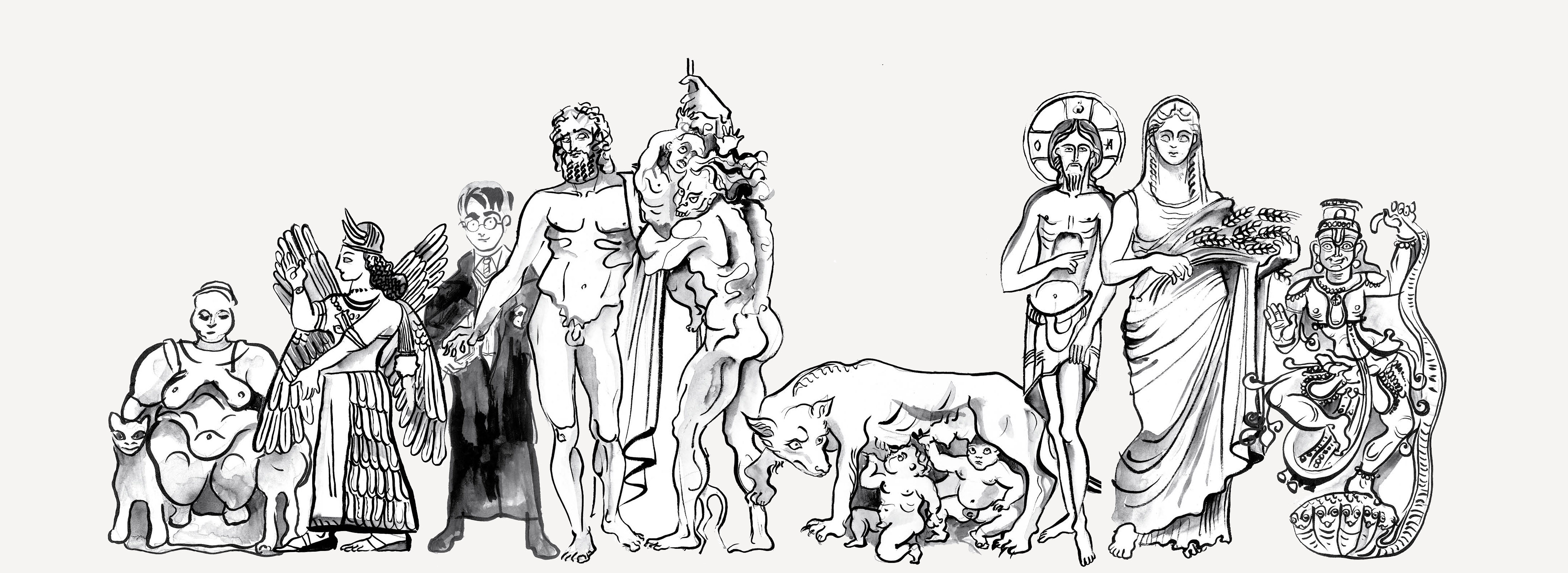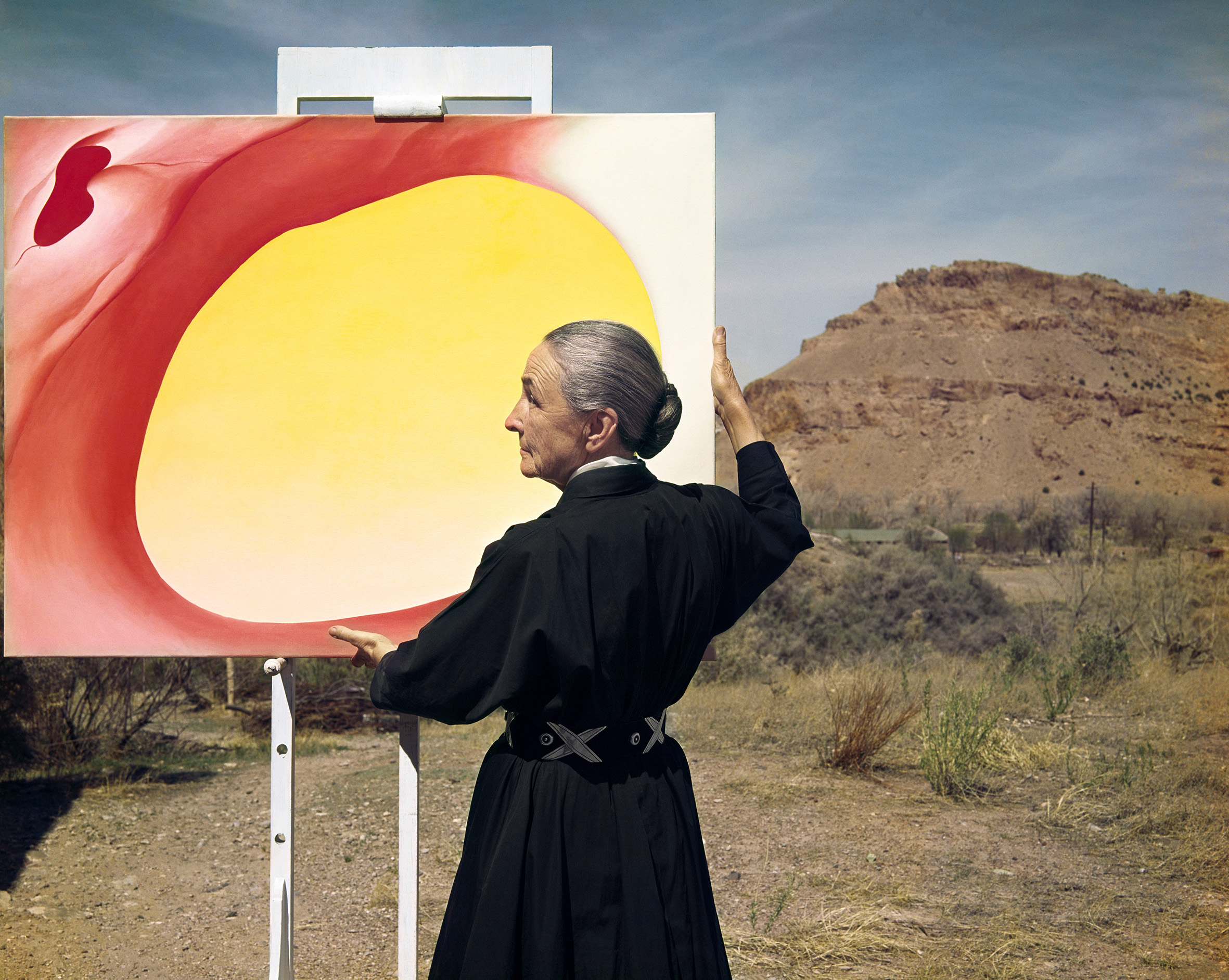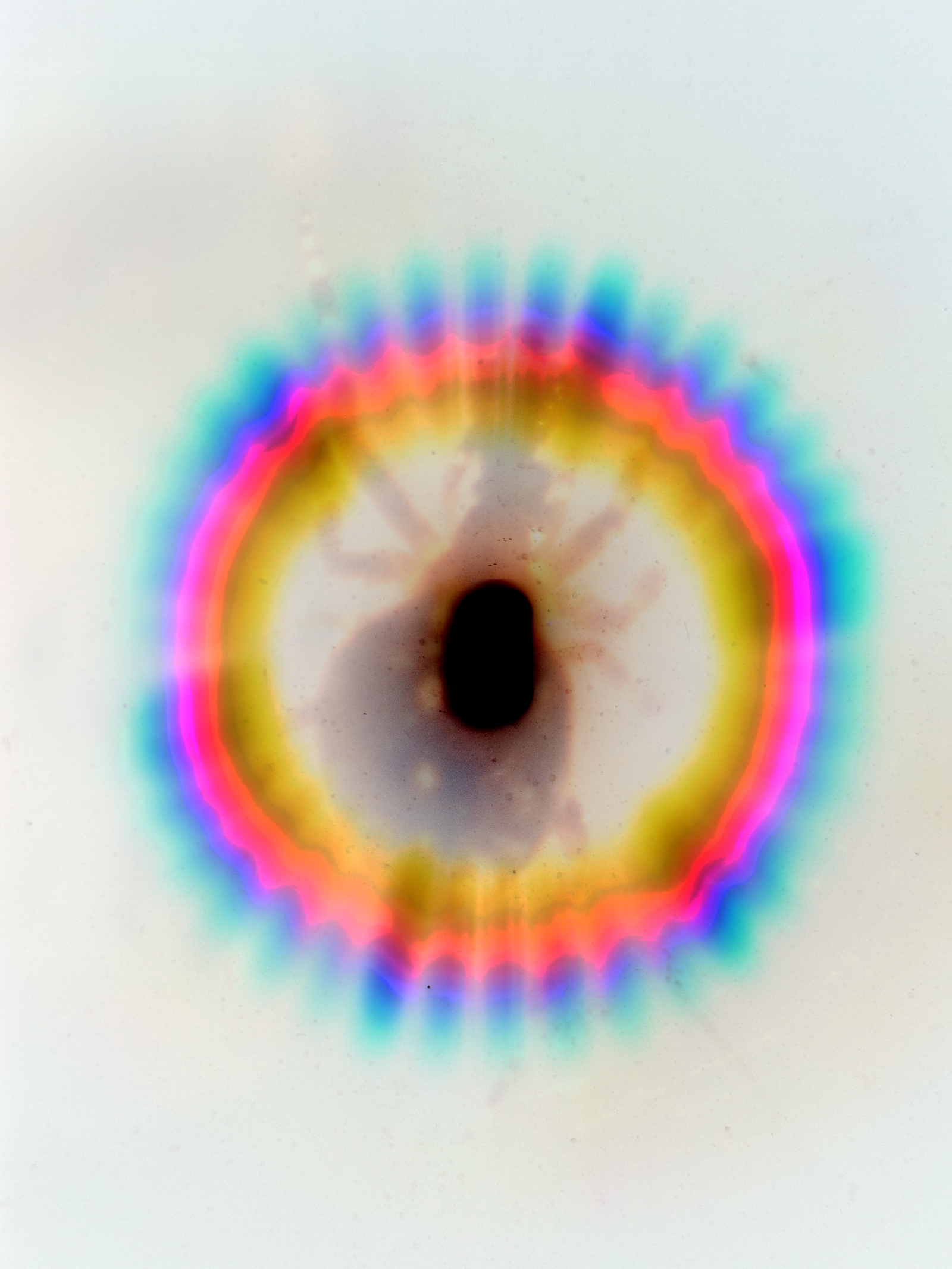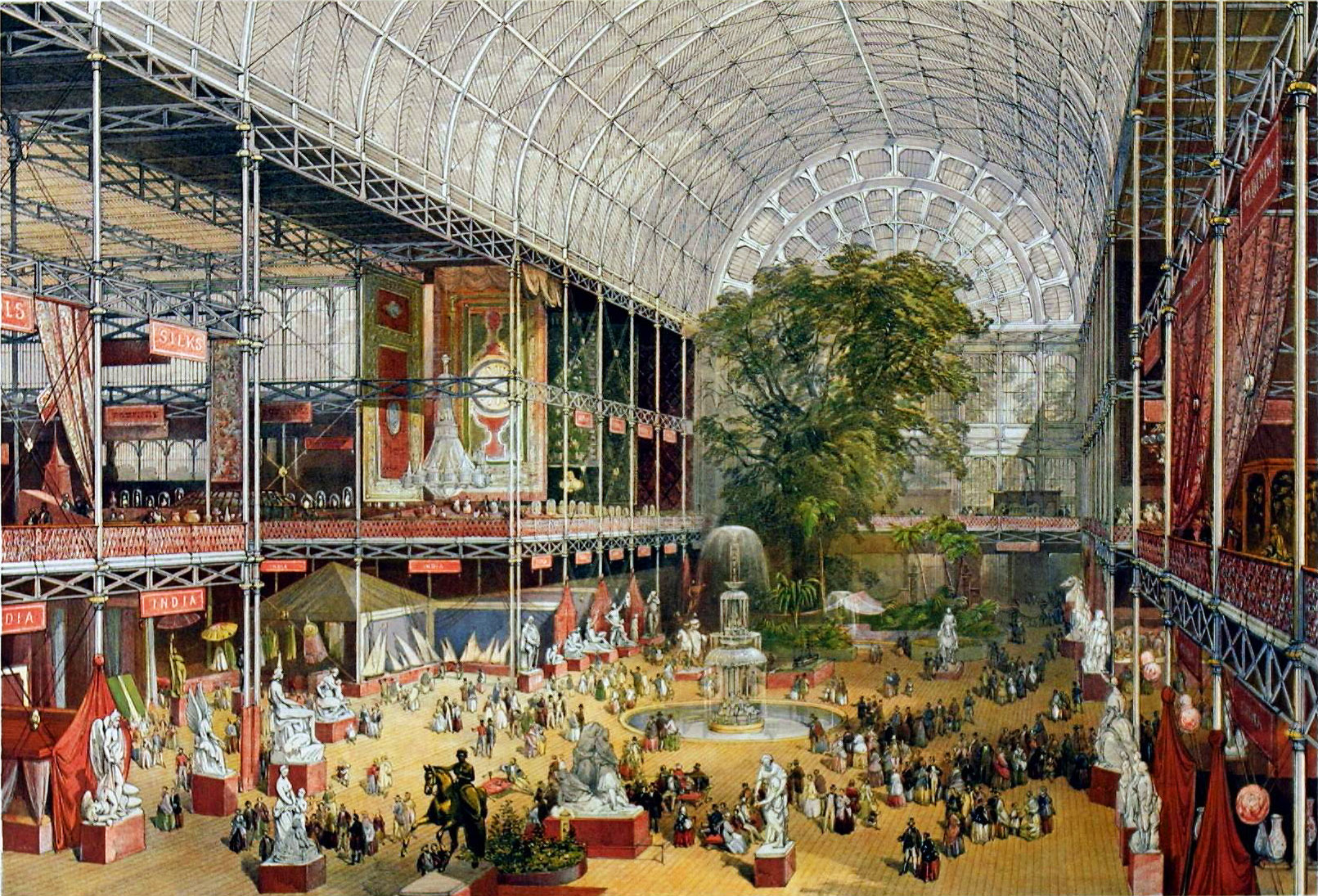
The ancients believed that it contained a fragment of creative divine fire, and that the sun was made out of it. It’s no wonder that they used it to craft protective amulets, for this life and the next. Paweł Janiszewski writes about the ancient fascination with crystal.
Expert literature explains that those vases adorning cabinet shelves aren’t crystal at all, but lead glass, which, in what is fortunately a bygone era, was used to make such little monstrosities. Real crystal – that is, the mineral commonly known as mountain crystal – is a colourless quartz. Next come the complicated chemical diagrams and scholarly geological explanations that can put off practically anyone. Studying it all makes you yearn for the days when chemistry, still firmly within the clutches of alchemy, labelled stones as the Green Lion, the Red Dragon, the White Swan or the Snow Maiden. They might be rather vague descriptions, but they certainly fire up the imagination.
Yet if we study the writings of ancient authors, we find out that crystal was already something exceptional at the dawn of civilization, existing in physical reality, but simultaneously with a metaphysical dimension.
Divine fire
The Greek noun krystallos means ‘ice’ in its primary sense, but is also used figuratively to describe a state of numbness or stiffness. For the ancients, crystal stone was thus water that had frozen forever. But it wasn’t a dull natural process. ‘Freezing’ is actually the wrong word; a kind of metaphor. Rather, crystal was ‘petrified’ water: a liquid that had transformed into the opposite physical state and become a stone, solidified in a form that was contrary to its nature.
The ancients weren’t sure what forces and phenomena made water turn to stone. Some believed that extreme cold not only froze water but also transformed its structure, making it become stone. Generally, that kind of stone couldn’t melt, but just to be sure, mountain crystal was used to make dishes and goblets intended for cold liquids rather than hot ones. Wealthy people had beautifully carved crystal goblets, in which they served water or wine with ice cubes. It was seen as the height of sophistication and elegance, and what’s more, was very useful in the hot Mediterranean climate.
But some ancient scholars of nature had doubts as to whether it was extraordinary cold that had ‘petrified’ the liquid forever – they pointed out that crystals are found abundantly in hot countries. That’s why Diodorus of Sicily, among others, wrote that the stone was formed not from frozen, but from somehow ‘burned’ water. In his opinion, when “the power of divine fire” acted on pure water, transparent crystal was formed. If during this process the liquid was polluted with some kind of colouring additives, other precious and semi-precious stones were formed: emeralds, rubies, chrysolites. It’s not clear what Diodorus thought this ‘divine fire’ was, but clearly this brings us slowly into the realms of metaphysics. This seems to be not a normal flame, but some kind of fiery divine breath permeating the cosmos. This is what miraculously ‘solidified’ (Greek systasis) the water. In our world, water normally extinguishes fire, and fire evaporates water. But there are forces that, in an unclear way, break these rules. And that’s how precious stones are formed, of which unpolluted crystal is the most brilliant. It contains a fragment of creative divine fire.
These ideas and concepts had significant consequences. For instance, the belief emerged among the Pythagoreans that the sun itself is a giant crystal lens, which attracts and concentrates the stars’ fiery energy and transmits it to Earth. As a result, our planet is light and warm, plants grow, and animals and people can live. Without the forces focused by the sun, none of this would be possible. Our globe would be a cold, rocky, unpopulated mass. But with its light and warmth, the Crystal Star means that Earth and everything on it is imbued with life-giving, divine, fiery breath. The fragments of crystal in our world and the Great Solar Crystal in the sky are thus the same, most valuable substance in the universe.
Hidden powers
The ancients believed in the extraordinary power of crystal. Some of their beliefs seem naive nowadays, because they were based on erroneous physical principles. They thought, for instance, that due to its fiery origin, crystal didn’t heat up when put in fire, because it was created by the abnormally hot flame of the divine fire. Other speculation about crystal was based on accurate observations. The ancients knew that the transparent stone focused sunlight, and if it fell on highly flammable materials, it could cause self-ignition. A flame created in this way was known as a ‘sacred fire’ (Greek hieron pyr). Often this is what burned on altars to the gods, and it was the only fire in which sacrifices to them could be burned. It was a pure flame, divine by nature, different to the kind used for roasting and boiling, or which warmed and illuminated homes, or which – as we should not forget – was used to burn the bodies of the dead. Fire from crystal was considered supernatural.
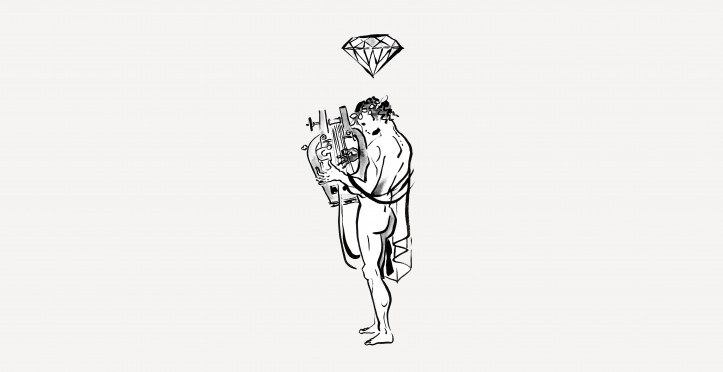
The stone’s powers were thought to include powerful forces that could heal, among other things. In ancient practices falling somewhere between medicine and magic, we find recommendations to attach a small crystal to various parts of the body. For instance, a crystal tied at the level of the kidneys was meant to relieve ailments there. You could also resort to a practice known as crystallomancy, literally ‘divination with crystal’. A suitably polished stone was placed in a specially lit room, and a magician recited and sang songs while staring into the crystal. Using the flashes and signs in the stone, he could decipher specific instructions relating to the subject matter of the consultation. These could be prophecies, or advice and instructions for healing treatments. Here we have the origins of the idea of sorcerers’ magic crystal balls. It’s perhaps worth adding that when short of crystal, they simply used water poured into sacred dishes. They believed the same causative power that turned it into a crystal stone could show visionary images on the surface of the unsolidified liquid. Sometimes instead of water or crystal, they studied a mirror hung above the liquid or submerged in it. These practices are all linked by the idea of visionary flashes that a magician deciphered and interpreted.
But crystal had a much more important use as well. It’s difficult to specify exactly when, but probably towards the end of antiquity, in the fourth or fifth century, a poem was written in Greek hexameter known as the Lithika, and it has survived to this day. Its name comes from the Greek word lithos – ‘stone’. It is thus a treatise on stones. To make the text even more exceptional, tradition holds that it was written by Orpheus himself. This mythical Thracian hero is said to be the first poet in history. He was even called the father of song. He is said to have lived 11 centuries before Homer, long before the Trojan War, and participated in the legendary voyage of the Argonauts to fetch the golden fleece from Colchis. In antiquity, he was considered to be the precursor of magic, because his incredible singing enchanted people and animals. He was depicted playing the lute, surrounded by enthralled predatory animals. His songs were said to make the sea stop moving, and trees come down from the mountains. Even the rulers of the underworld, Hades and Persephone, succumbed to the charms of his music. He was therefore an ideal candidate for the author of a poem about the miraculous properties of stones. It will come as no surprise that the first stone described in the poem is crystal. We read of its miraculous powers of kindling fire and treating diseases, but that’s not all. The Lithika also includes the following instructions:
Take in your palm a bright, transparent piece of crystal,
the product of divine light that shines all around; its
brilliance delights even the invincible hearts of the gods.
With such a stone in your hands when you hasten into the temple,
Every god will heed your lucky requests.
As we can see, the powers of crystal not only help with pleas to the gods, but even force them to grant us what we desire. Now we have purely magical thinking: this is a stone feared and obeyed even by the immortals. Whoever owns it rules the gods! It might surprise us, but in antiquity people considered the gods of daily worship (Zeus, Hera, Athene, and so on) to be individualized personifications of different dimensions of a single divine force. That same force is the power that permeates the world. In many conceptions, it took the form of an ethereal fire, divine breath. Crystal was therefore the stone that, due to its creation by this divine fire that burned water, was both a relative of the gods and somehow higher than them in the hierarchy.
In the Egyptian town of Oxyrhynchus, a papyrus was discovered dating from the turn of the second century that includes a description of a magical tablet used for astrological practices. It was covered with a diagram showing the geocentric universe: Earth in the middle, surrounded by rings of seven ancient ‘planets’ (also called stars), in this order: the Moon, Mercury, Venus, the Sun, Mars, Jupiter and Saturn. Each of these was also represented by a corresponding symbol from a given material: the Moon – silver, Mercury – turquoise, Venus – sapphire, the Sun – gold, Mars – onyx, Jupiter – crystal, Saturn – obsidian. Using this tablet, the magician somehow arranged the symbols crafted from precious stones and probably used it to read horoscopes. Most importantly for us, however, is the fact that crystal symbolizes the planet of the highest god, Jupiter-Zeus; the ruler of the crystal sphere of the cosmos.
Similar to the tablet described in the papyrus from Oxyrhynchus is one mentioned in the Alexander Romance, a text popular at the end of antiquity and later on, in the Middle Ages. The protagonist of this text is the great historical conqueror, but he is already depicted as a kind of fairy-tale figure. It includes a scene where Olympias, Alexander’s mother, has her horoscope read. A tablet made of ivory, ebony and gold is used. Concentric circles of the universe have been engraved in it. The magician uses the symbols of the seven ‘stars’. This time it’s the Sun that’s made of crystal, with the rest as follows: the Moon – diamond, Mars – hematite, Mercury – emerald, Jupiter – turquoise, Venus – sapphire, and Saturn – serpentinite. Clearly, precious stones have some connection to the heavenly spheres. Crystal is always related to the most important of them: either the sphere of the most important god, Jupiter; or the Sun, the symbol of the Absolute. Crystal is therefore the most brilliant substance of the physical world.
The most faithful companion
Since crystal was something extraordinary in the minds of the ancients, extraordinary amulets were crafted from it: small round beads engraved with magic inscriptions. Their small size meant it was possible to wear them on a daily basis. Unfortunately, these inconspicuous objects have never all been collected and described. Most of the time they lie unnoticed in forgotten museum cabinets and storerooms. They don’t make for spectacular exhibits that draw crowds’ attention. They’re still waiting for their five minutes of fame. But let’s look at just two examples to see how interesting these objects really are.
One of these small crystal beads is today in the Museum of Fine Arts in Budapest. It is barely 2.5 centimetres in diameter. Unfortunately, we don’t know where it was discovered, because it came to the museum as part of a private collection. On the surface of the bead, a radiating sun and a half-moon have been engraved on opposite sides. Between them is a line of Greek letters forming fairly unintelligible words, which when transcribed into the Latin alphabet, look like this: SOTHESINEI – OEIEOIOY – PSETH – BAINXOOOX. This inscription dates from the second or third century, but the bead itself seems to be much older. Someone therefore found or received the ancient crystal bead and, either by themselves or with the help of a magician, engraved a magic spell on it, which – they believed – enhanced the powerful forces dormant in the stone. We’d like to know what the spell means, but we can’t be sure. Specialists in ancient magic have noticed, however, that the word SOTHESINEI consists of the somewhat altered name (which is quite typical for magic) of the star Sothis, identified with the goddess Isis and the Greek verb ineo, or ‘purify’. So, it seems we have a plea to the Egyptian goddess, who was also the patron of magic, to purify the owner of the bead. Then there is a series of eight Greek vowels, which had to be ‘sung’. This is also a typical component of ancient magic. There were even instructions about how to incant each of them. One of the magical papyri recommends the following approach:
A – with open lips, undulating
O (a short ‘o’) – short, as though exhaling in a threatening way
IAO – in the direction of the ground, the air, the sky
E (short ‘e’) – like a baboon
O (long ‘o’) – as above
E (long ‘e’) – with joy, exhaling
Y – like a shepherd, lengthily
Next comes the distorted name of the Egyptian god of dark forces Seth (PSETH) and the word (BAINXOOOX), which is also found on another amulet in the Metropolitan Museum of Art in New York. The owner of our bead was therefore referring to a more widely-used spell. The conclusion: the magic crystal bead from Budapest summons the powers of the powerful gods Isis and Seth, and contains a spell consisting of a string of incanted vowels and a magic word. The owner of this amulet had nothing to fear. It was his most faithful companion. It guarded the life of the one who owned it.
But what about after death? Did the crystal amulets help their owners then too? The second of our magic beads will answer that question. Today it is found in a museum in Copenhagen. It is just as small as the one in Budapest – around 2.9 centimetres in diameter. It was made in about 300 CE, somewhere in the Roman Empire, but it was found in Årslev in Denmark, in the grave of a woman who died in the fourth or fifth century. And so, whether it was as loot, as a valuable gift or in some other way, the small piece of crystal ended up in the far north, in the world of the barbarians. There, as an exceptional object, it was passed from hand to hand until finally it ended up belonging to someone who took it with them on their journey to the next world.
Why did this inconspicuous ball turn out to be so valuable? Because it wasn’t a normal piece of polished crystal. We can tell that from what’s written on its surface: a mysterious symbol resembling a downward pointing arrow, above which there is a Greek inscription (again transliterated into Latin): ABLATHANALBA. This is a magical word known also from other sources, both magical papyrus and amulets. It is a transformed Hebrew or Aramaic expression that acted as an invocation to the gods. Its power lies in the fact that it consists of the same letters when read from either end, meeting in the middle at a Greek theta (Θ =TH), which is important as it’s the first letter of the word ‘God’ (theos). At the same time, whether on purpose or in an oversight, the engraver of the bead from Copenhagen ‘lost’ the letters NA on the left-hand side (ABLA[NA]-TH-ANALBA). We could speculate at length over the reasons for this. The same is true for the strange arrow. But there can be no doubt that the crystal bead has magical powers. Did the barbarian woman who took it to her grave know how to read the inscription? Did she understand its meaning? Did she know what the mysterious arrow meant? It’s doubtful. But for her and her family it was a valuable item, coming from the lands of the powerful and distant empire. The power of this item thus surpassed the borders of countries and civilizations. The polished piece of crystal, covered in mysterious signs and inscriptions, was clearly very significant. It was worth bringing on the journey into the next world. And on that journey, it was the most faithful companion and helper.
As you can see, the ancients’ unfettered imagination turned beautiful, albeit banal, crystal into an extraordinary artefact. It’s worth remembering this the next time we awkwardly contemplate the spurned, dust-cloaked crystal vases, dishes, ashtrays, carafes and glasses that fill the cabinets of our parents and grandparents’ homes. Perhaps they also contain a divine fire with truly extraordinary properties. Their time will come, too.
Translated from the Polish by Zosia Krasodomska-Jones





